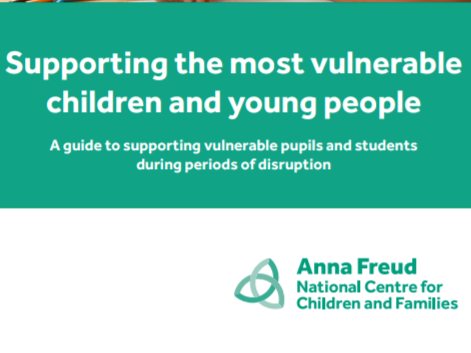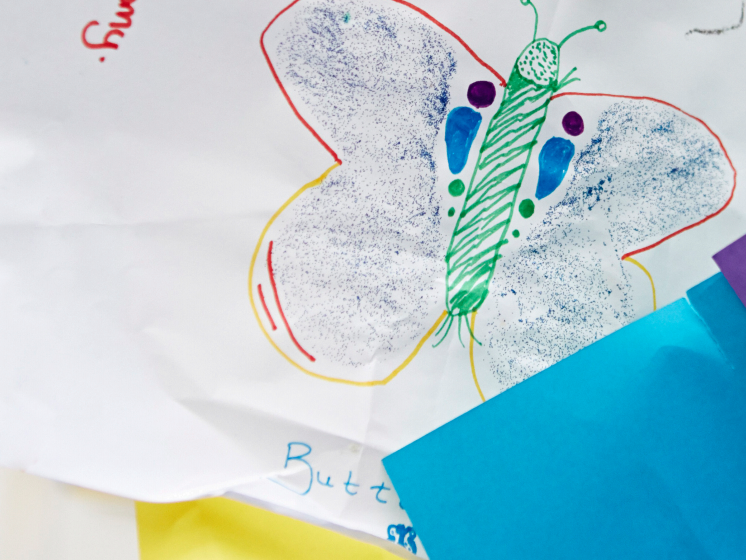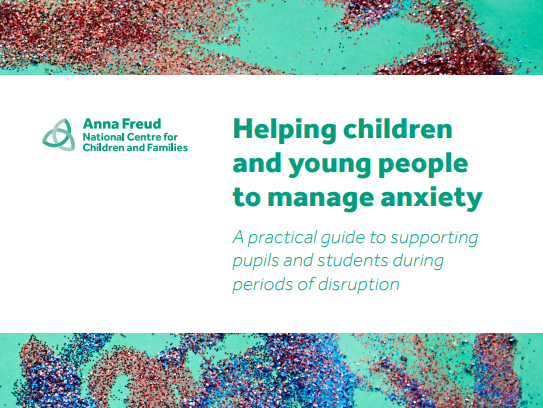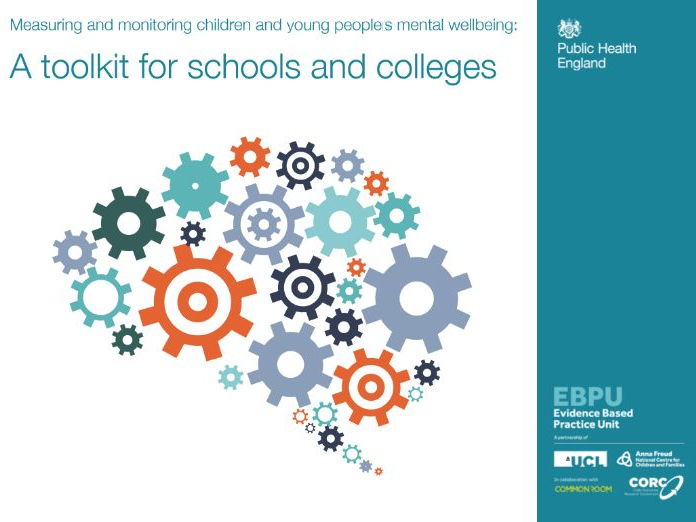36Uploads
20k+Views
31k+Downloads
All resources

My self-care plan: primary
Just as we look after our physical health, it’s important to look after our mental health.
Self-care is all about what you can do to help yourself feel better or to keep yourself feeling good. It’s a way that we can look after our own mental health and wellbeing. It can help your body and mind to relax, drift away, or be more energised.
This self-care plan walks primary-aged children through a series of steps, helping them create a simple self-care plan that works for them. It helps children identify activities that they can use to support their mental health.
Some of the suggested self-care activities include:
music and dance
mindfulness
art
The resource was co-written by Anna Freud Centre experts and young people, who shared ideas on self-care strategies that work for them.

Supporting Mental Health and Wellbeing in Secondary Schools
It’s never been a busier time for school leaders and teaching staff with an interest in promoting mental health. Our Supporting mental health and wellbeing in secondary schools booklet for teachers offers an introduction to some of the mental health issues that children in secondary schools may face.
The booklet, developed with our child mental health experts, explains in simple terms what to do if you are worried about a child or young person in your school, and includes information on a range of topics including exam stress, sleep problems, eating disorders, substance use, ADHD and responding to traumatic events.

Using measurement tools to understand pupils' needs
Understanding need is one of our 5 Steps towards a whole school or college approach to mental heath and wellbeing. This short guide for schools and colleges focuses on how to use measurement tools to understand pupils’ wellbeing so that you can provide them with the support they need.
In this resource we focus on two main ways of using surveys:
Using surveys with large groups of pupils (a cohort) to understand their needs.
Using questionnaires with individual pupils to understand their specific needs.
We recommend this useful resource for any schools and colleges who want to understand the mental wellbeing needs of their pupils using a simple step-by-step approach.

Wellbeing Measurement for Schools Staff Survey
Supporting Staff is one of our 5 Steps towards a whole school or college approach to mental health and wellbeing.
The simplest way to understand what teachers and school staff need to support their mental health is to ask them. However, many education institutions do not regularly survey staff to establish their levels of wellbeing.
This document provides sets of questions to help schools and colleges better understand their staff and provide them with the support they need. It includes tools that can be used to measure wellbeing robustly and consistently.
Use these sets of questions to find out:
How teachers and school/college staff are feeling
What is driving good and poor mental health (including asking staff how they feel about work practices, culture, engagement and management)
How supported teachers and school/college staff feel
Whether staff feel equipped to support children and young people with their mental health
Any additional support they need for their mental health and wellbeing.
Schools and colleges may want to use the whole survey or may want to select sections from it, depending on priorities and needs.

Moving Up! The transition to secondary school
This animation and accompanying teacher toolkit is aimed at supporting pupils who have recently started Year 7 or who will be preparing to transition to secondary school later in the year (Years 6 and 7). They were developed in collaboration with young people, teachers and mental health experts. The animation aims to support pupils to:
Identify potential worries associated with starting secondary school
Know they’re not alone if they are feeling worried
Talk to a trusted adult or friend if they have any concerns
Identify solutions and strategies for looking after their mental health, including self-care

Coronavirus - Sharing good practice and looking to the future
In this booklet we include some examples of good practice that schools have shared with us about how they’ve responded to the challenges of lockdown. We also look at how this period of lockdown can help us think about whole-school approaches to mental health and include some suggestions about how to start this process.

Coronavirus - Supporting the most vulnerable children and young people
Our free Supporting the most vulnerable children and young people guide advises on three practical steps to help the most vulnerable children and young people during the Coronavirus pandemic. These are around risk assessment, focusing on nurture and upskilling staff.

Coronavirus - Managing unexpected endings and transitions
Our free Managing unexpected endings and transitions booklet draws on the existing evidence base around endings and shares some established approaches to support children and young people. It also includes a great case study of how one primary school has maintained connections with pupils and parents in the crisis.

Coronavirus - Helping children and young people to manage anxiety
Helping children and young people to manage anxiety: A practical guide to supporting pupils and students during periods of disruption draws on the existing evidence base around self-care and Cognitive Behavioural Therapy (CBT) to think about how we can support children and young people struggling with anxiety. It is aimed at supporting teachers working remotely with children, and can also be shared to support parents and carers who are playing a more significant role than ever in their child’s education at a challenging time.

Coronavirus - Looking after each other & ourselves
A guide to supporting the mental health and wellbeing
of staff at schools and colleges during periods of disruption

Coronavirus - Supporting schools & colleges
Our free Supporting schools and colleges booklet provides advice and guidance for school staff about how to help children and young people manage their mental health and wellbeing during times of disruption to their learning.

Engaging Parents
As part of the Anna Freud National Centre for Children and Families ‘You’re never too young to talk mental health’ campaign we’ve released a series of expert advice videos for schools on a range of topics. Here, Brenda McHugh, Consultant Psychotherapist, gives advice to school staff about engaging with parents.

Talking Mental Health Teacher Toolkit
We know that over 50% of mental illnesses start before the age of 14 and one in 8 children and young people has a mental health disorder. The Talking Mental Health animation and accompanying resources aim to open up conversations with children about mental health in school, at home and with friends.
The Toolkit includes:
An assembly plan
A lesson plan
A set of cross-curricular activities
Resources to accompany the above
These plans and acivities have been written by a group of teachers at the Anna Freud National Centre for Children and Families. While we recognise that every school and class is different, we have produced these as a starting point for working with years 5 and 6 at your school.

Supporting staff wellbeing in schools
Teaching is a tough job. It can be immensely rewarding but also physically and emotionally draining. If we want our school staff to do what is asked of them, then we need to make sure that their mental health and wellbeing is effectively supported.
This booklet has been developed with our mental health experts, and aims to give school staff and Senior Leadership Teams some simple guidance and good practical examples where schools have successfully implemented wellbeing strategies.
Topics featured include:
What can impact or support staff wellbeing?
What can Supervision look like in schools?
How can senior leaders prioritise wellbeing?

Supporting mental health and wellbeing in schools
A booklet for primary and secondary schools to support all staff working in school settings to understand how best to help children and young people in their care.
Developed with our child mental health experts, the booklet explains in simple terms what to do if you are worried about a child or young person in your school, and includes information on a range of topics including anxiety, low mood and self-harm. The colourful, informative pages could also be printed and displayed as posters in staff areas.

Measuring and monitoring children and young people's mental wellbeing: A toolkit for schools
Efforts taken by schools and colleges to promote the physical and mental health of the student population creates a virtuous circle, reinforcing attainment and achievement that in turn improves student wellbeing, enabling students to thrive and achieve their full potential.
With half of all diagnosable mental health disorders established by the age of 14, there is a strong case to promote children and young people’s mental health.
There are a range of risk and protective factors that impact on mental wellbeing. These span individual factors, family, learning environments and the wider community. The evidence tells us that the learning environment plays an important and valued role in helping protect and promote student mental wellbeing.
Public Health England and the Anna Freud National Centre for Children and Families are committed to improving health outcomes for children, young people and their families, and collaborated to fund and develop this toolkit.
The toolkit aims to raise awareness amongst school and college staff of the range of validated tools that are available to help measure subjective mental wellbeing amongst the student population. This, in turn, will help school and college leaders make use of school and college level data to identify the mental wellbeing needs of students and determine how best to address these.
















